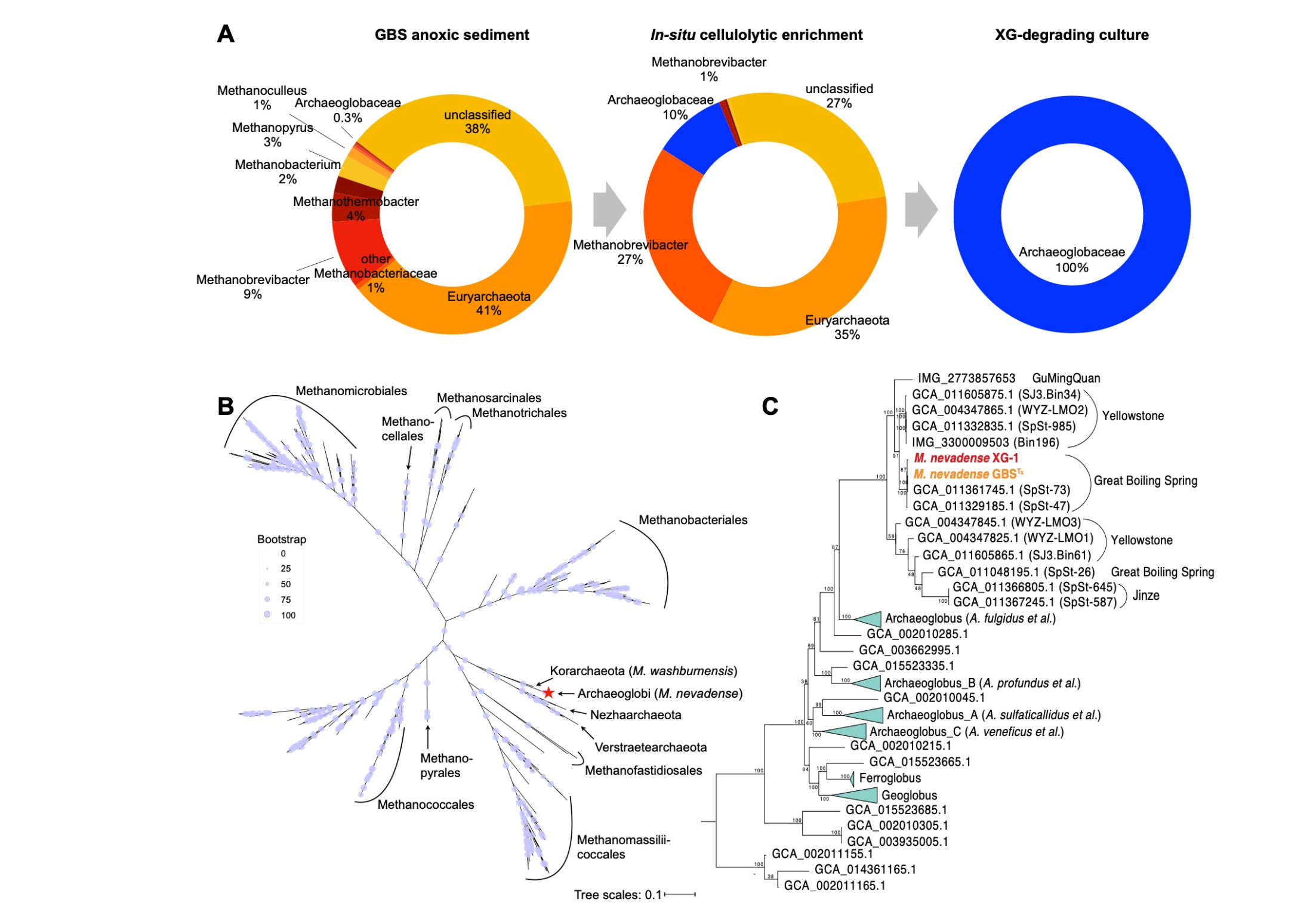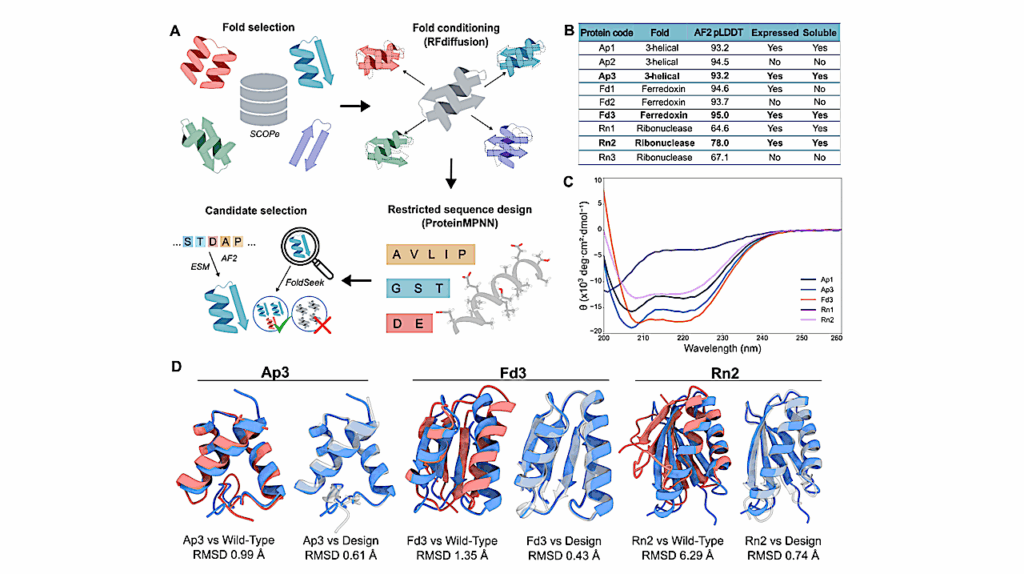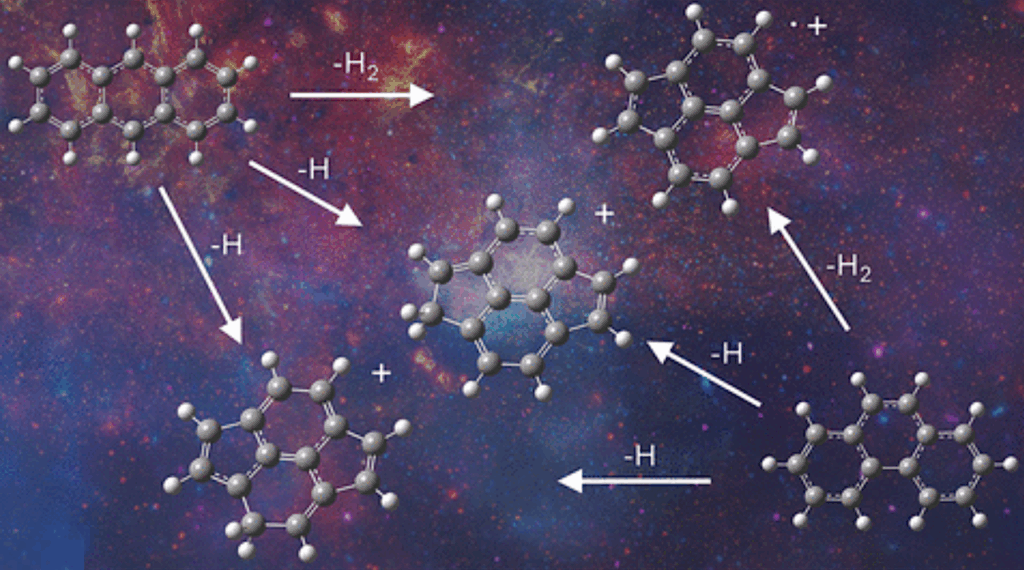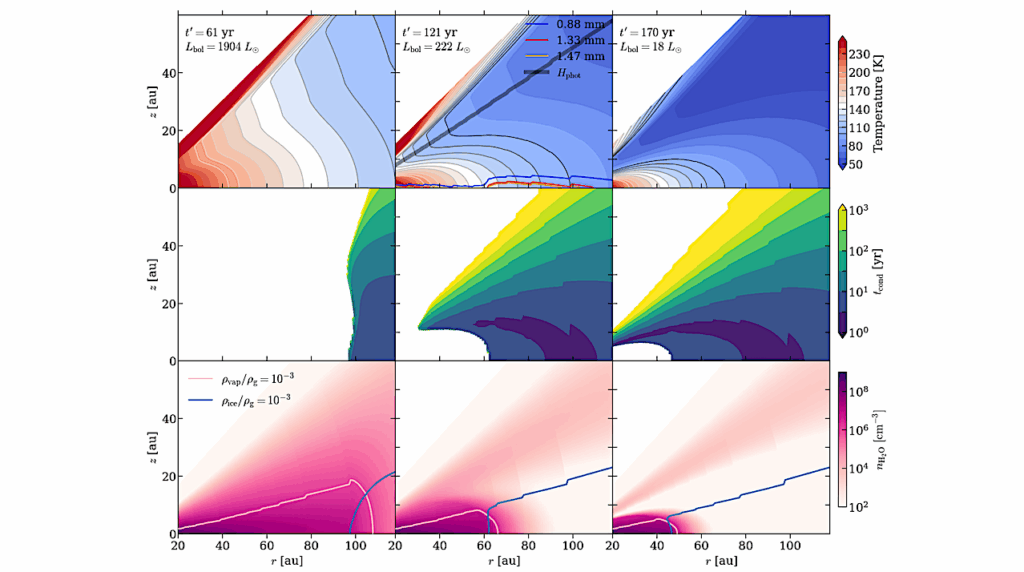Mcr-Dependent Methanogenesis In Archaeoglobaceae Enriched From A Terrestrial Hot Spring

The preeminent source of biological methane on Earth is methyl coenzyme M reductase (Mcr)-dependent archaeal methanogenesis.
A growing body of evidence suggests a diversity of archaea possess Mcr, however, experimental validation of hypothesized methane metabolisms has been missing. Here, we provide evidence of a functional Mcr-based methanogenesis pathway in a novel member of the family Archaeoglobaceae, designated Methanoproducendum nevadense, which we enriched from a terrestrial hot spring on the polysaccharide xyloglucan.
Our incubation assays demonstrate methane production that is highly sensitive to the Mcr-inhibitor bromoethanesulfonate, stimulated by xyloglucan and xyloglucan-derived sugars, concomitant with the consumption of molecular hydrogen, and causing a deuterium fractionation in methane characteristic of hydrogenotrophic and methylotrophic methanogens. Combined with the recovery and analysis of a high-quality M. nevadense metagenome-assembled genome encoding a divergent Mcr and diverse potential electron and carbon transfer pathways, our observations suggest methanogenesis in M. nevadense occurs via Mcr and is fueled by the consumption of cross-fed byproducts of xyloglucan fermentation mediated by other community members.
Phylogenetic analysis shows close affiliation of the M. nevadense Mcr with those from Korarchaeota, Nezhaarchaeota, Verstraetearchaeota, and other Archaeoglobales that are divergent from well-characterized Mcrs. We propose these archaea likely also use functional Mcr complexes to generate methane on the basis of our experimental validation in M. nevadense.
Although our stable isotope approach reveals that microbial methanogenesis contributes only a small proportion of the overall methane abundance in the native habitat, divergent Mcr-encoding archaea may be underestimated sources of biological methane in terrestrial and marine hydrothermal environments.
https://www.biorxiv.org/content/10.1101/2022.12.01.518715v1
Astrobiology








